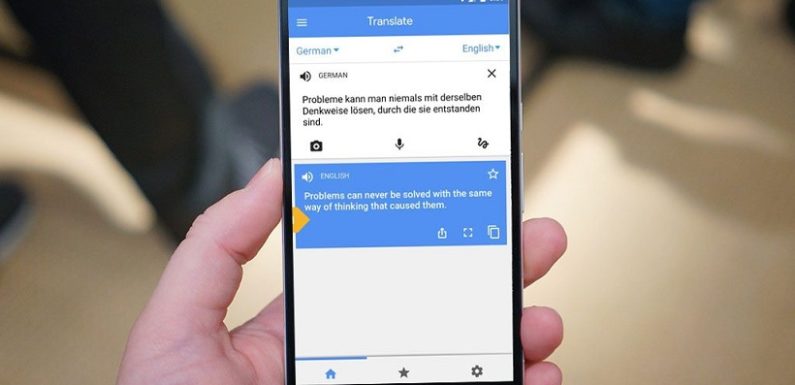
Technologies have opened up a new vista on what needs translating. One of those newer needs is mobile app translation. Due to how interactive and visual the app experience is, apps require developers and translators to focus both on the languages themselves and the localization efforts that help each culture have a smooth experience with the app. Below are several ways that developers can ensure that their app translation is perfect.
Find Professional Translation
Finding suitable professional translation services is the most important part of the mobile app translation process. Do not try to go it alone using Google Translate! Language and culture are far more nuanced than a translation algorithm can account for, even with the latest developments in neural networks and deep learning. The internet is rife with hilarious stories of communication errors that occur because of Google Translate, and you don’t want your app to become one of them.
A good translation service will be able not only to competently translate your text, but also to take into account cultural perceptions of what you are saying, as well as the visual aspects of your app. This is especially important for games.
Apps can spread to truly global audiences. A translation service can help translate your app across many different languages, dialects and cultures.
Have Text in an Easy-to-Access Format
Once you source a professional translation company, you’ll want to make sure the text in your app is in an easy format for people to translate from. You can do this by using an XLIFF file, sometimes called an XML Localization Interchange File Format. These files include all the strings of text in your app that will need translation.
You may also want to include comments within these files for the translators. These comments should include any notes about context and how each string is used within the app. From a translator’s standpoint, knowing how each string interacts within the app can make for a smoother translation that keeps context in mind.
Remember the Visual Aspects of Mobile App Localization
Since apps are so visual, you need to make sure that every single aspect of the app is geared for the culture you plan to present it to. After all, app localization isn’t just about how the text reads.
Keep in mind the overall look of the app as part of the mobile app localization process. That means looking at text translation, as well as images, audio, video, date formats, currencies and anything else that can vary across cultures.
For example, you may need to focus on re-recording audio, or the text in images may need to be translated. Some localization efforts go as far as to switch out the models in the images with ones from the culture the piece is being localized into. Since app translation has so many small details and layers to it, this is where a strong translation and localization company will come in handy.
While you localize, don’t forget your App Store or Google Play content. And like the rest of the app itself, it’s about more than just text translation. You’ll need to focus on keywords, previews, screenshots, videos and in-app purchases, too.
Test the New App Translation
It can be tempting to get the mobile app back from the translation service and rush the product straight to market. But even a translated app from the best of translation companies will need some testing to make sure all the intricate pieces of the app localization work together. That’s where alpha and beta testing come in.
Alpha testing is a fancy term for the testing you do to make sure everything in the app is functioning together properly after the translation. You don’t even need to speak the language it’s been translated to. You just need to be familiar enough with the app so that you can tell it’s doing what it’s supposed to. Your overall goal is to make sure the app itself is still working properly, even after localization services have been completed.
Next, you’ll need to make sure it’s a good experience for people in the language the app translation was geared towards. That’s where you’ll conduct your beta testing. You’ll need to find people who are willing to test the app. A localization company may be able to help you connect with beta testers in other languages. Otherwise, you might want to post through online developer communities to find beta testers who work in other languages.
You’ll also want to make it easy for those beta testers to provide feedback after the mobile app translation. You can find tools that allow people to provide feedback about the user experience after translation, some of which even provide video recordings, like TestFairy.
Once you know your mobile app is working post-translation, you’ll be able to relax and enjoy releasing it to a whole new global audience.

